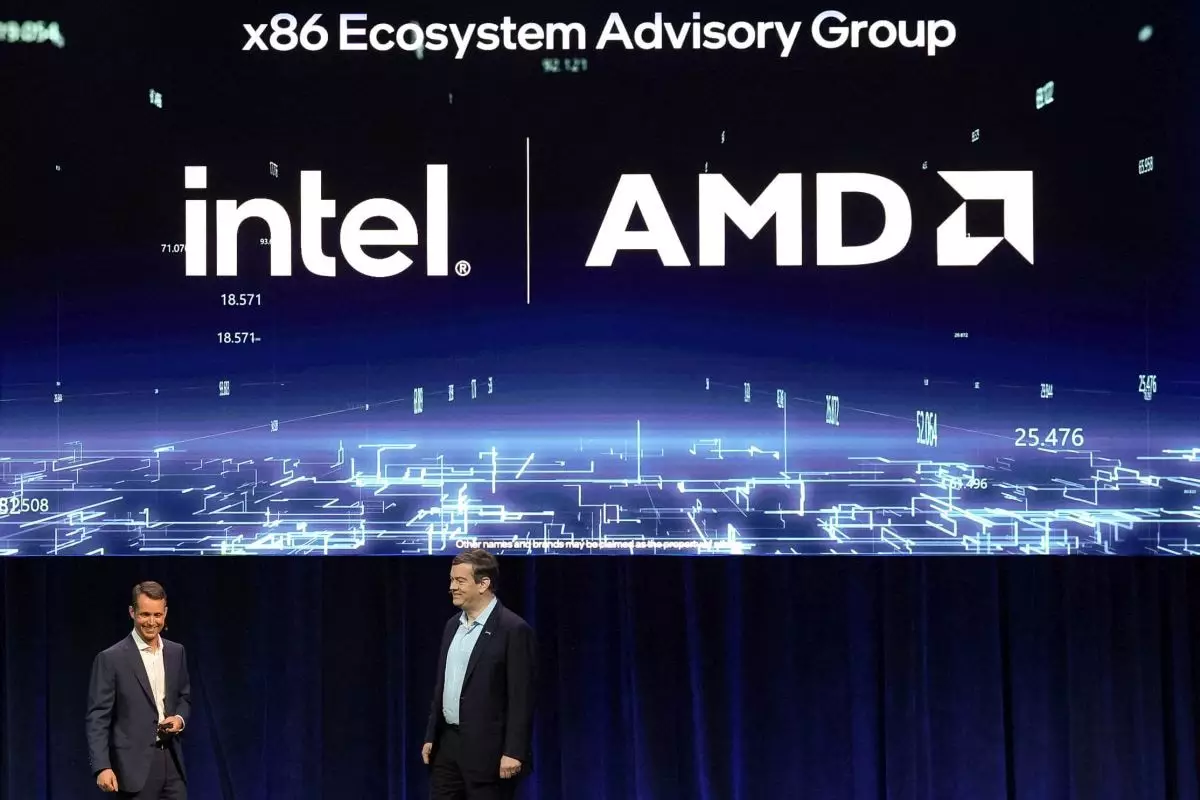The tech landscape is ever-evolving, and the recent partnership between Intel and AMD marks a transformative moment for the x86 architecture, a standard both firms have pioneered since its inception in the late 1970s. This cooperation, announced during the OCP Global Summit in California, aims to reshape how x86 architecture interacts with developers and the burgeoning market for Arm-based solutions. Despite being traditional rivals, Intel and AMD have set aside competitive instincts to work closely with key industry players like Google, Microsoft, Dell, and HP.
Intel and AMD’s announcement concerning the formation of the x86 Ecosystem Advisory Group reflects an urgent need to address the growing prominence of Arm architecture. In recent years, Arm chips have seen a significant surge in both usage and popularity, fueled by efficient performance and an ability to cater to diverse computing needs. Through this advisory group, the objective is to enhance software compatibility across different hardware platforms, a feature where Arm has established a competitive edge. By streamlining development across Intel and AMD technologies, the initiative aims to create a more cohesive x86 ecosystem.
This proactive step comes against a backdrop where Intel and AMD have observed a steady decrease in market share relative to Arm. As observed, with the introduction of more accessible Arm-based computers—such as Apple’s M-series and the Snapdragon X-series—x86 platforms need reliable mechanisms that ensure seamless software performance across varying hardware configurations.
The Impact on Software Development and Compatibility
The primary goal of the x86 Ecosystem Advisory Group is to ensure that software developed for Intel and AMD processors works effectively and efficiently across platforms. By creating a standardized set of instructions and architectural interfaces, the group anticipates fostering better cooperation between hardware and software developers. If realized, this initiative could lead to remarkable advancements within the x86 architecture, making it more adaptable and infinitely scalable—a crucial requirement for platforms intended for PCs, data centers, cloud services, and other applications.
In this context, the involvement of high-profile individuals such as Linux creator Linus Torvalds and Epic Games CEO Tim Sweeney highlights the group’s ambition to make significant strides in software development and overall architectural efficiency. Such alliances indicate a shared recognition, within the tech community, of the need for collaboration in the face of fierce competition, especially from a formidable entity like Arm.
The market dynamics paint a clear picture of why this initiative is vital. Recent research shows that Arm-based server solutions generated an estimated market value of approximately $5.84 billion in 2023, with expectations of a Compound Annual Growth Rate (CAGR) of 14.3% through 2030. As the demand for data processing and cloud computing skyrockets, both chipmakers recognize that adapting to evolving market needs is non-negotiable.
Intel’s CEO, Pat Gelsinger, emphasized the necessity for this collaboration by stating, “We are on the cusp of one of the most significant shifts in the x86 architecture and ecosystem in decades.” This statement signifies a pivotal moment in redefining the trajectory of x86 computing. Meanwhile, AMD’s Chair and CEO Lisa Su reiterated the group’s aim to propel the x86 architecture as the developers’ preferred computing platform, thereby emphasizing the goal of future-proofing this technology.
A Future-Oriented Perspective
The essence of the Intel-AMD partnership transcends traditional rivalry. It signals the dawning of a new era in computing, where cross-collaboration could yield unprecedented advancements. As they endeavor to cultivate an environment fostering software compatibility and efficient system architectures, it becomes essential for stakeholders within the technology sector to pay attention. This initiative may well redefine the competitive landscape, challenging established norms and providing a richer tapestry of choices for consumers and developers alike.
The formation of the x86 Ecosystem Advisory Group is not merely a reactive strategy against the growing Arm architecture but a visionary step toward enrichening the x86 ecosystem. As both Intel and AMD pursue this endeavor, they promise a future where software and hardware are seamlessly integrated, catering to the complex requirements of modern computing environments. With the combined efforts of industry leaders, the x86 architecture is poised for a revival, steeped in collaboration and innovative advancements.


Leave a Reply